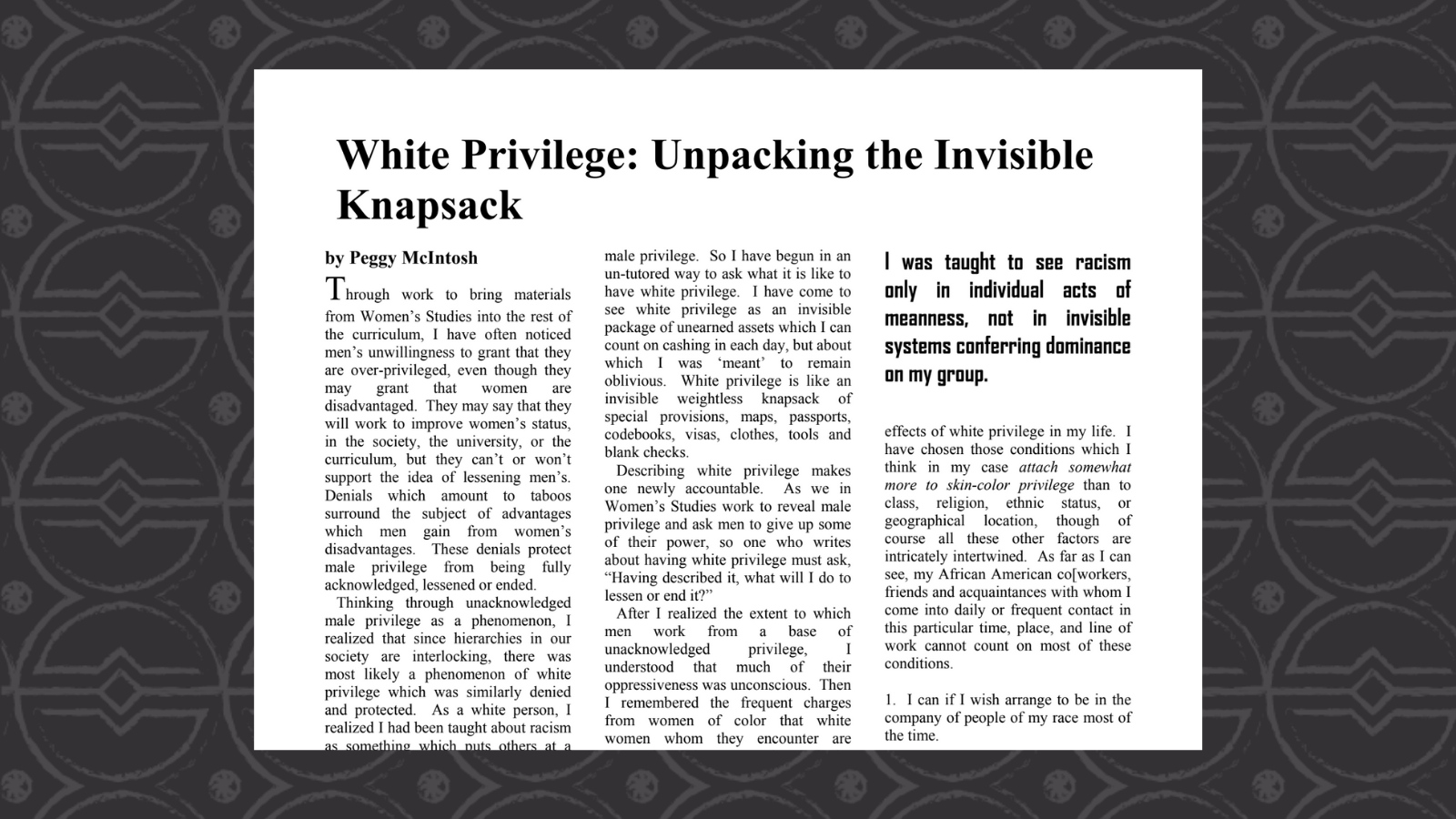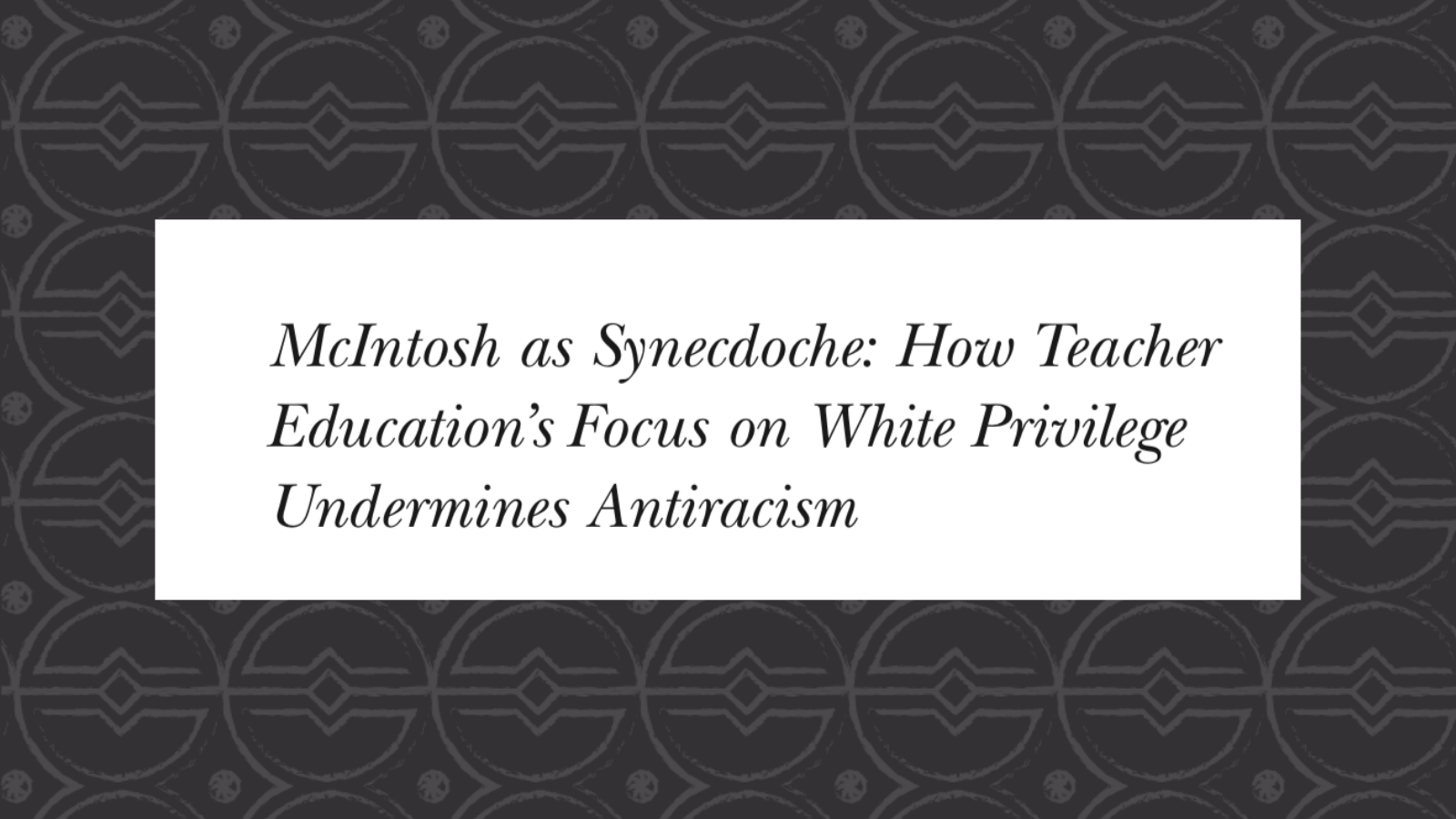2 For Schools with Majority White Staff and Students
Culturally responsive teaching and schooling is crucial not only to schools with large populations of Black and Brown students, but also for schools that may have only a handful of students of color. We have heard teachers respond to cultural competence training in majority White schools by saying, “I don’t have any students of color in my classroom this year, so racism and bias aren’t an issue.” Of course, this is where the problem starts. It is incumbent upon all educators not only to teach all students effectively, but to help their White students understand the systems of oppression in which they live, operate, and participate in and out of school. To ignore race in majority White schools and classrooms is to tacitly support systemic racism by failing to challenge it. It is our job as educators to model courageous and sometimes uncomfortable conversations about race, a skill necessary for thriving in a multicultural society.
Dear Critical White Scholar and Colleague
Source: HuffPost
While written by a professor to her colleagues, this letter is just as applicable to K-12 contexts. Dr. Robin Hughes asks White educators to participate actively in anti-racist work, relying less heavily on their colleagues of color to do this emotional and intellectual labor. She further implores that they work actively in the “hard spaces” of anti-bias work, the spaces that may be easier for them to access due to their identity.
White Privilege Workshop: Preparing White Folks to Become Allies and Leaders for Racial Equity
Source: Whites for Racial Equity
This module on White privilege (including helpful multimedia resources, definitions, and activities) could easily be adapted for use by a school’s Equity Committee either as an internal process or to be delivered as a part of school-wide diversity programming. The module should take around two hours to complete.
The Weaponization of Whiteness in Schools
Source: Teaching Tolerance
The author describes the weaponization of Whiteness as an often unconscious leveraging of White identity by many White educators when their authority is challenged in school. The article cites studies showing that educators disproportionately view Black students as the source of challenges to their power, examining such phenomena as “adultification” and white fragility, and then finally suggesting ways we can interrupt this pattern.
“White Privilege: Unpacking the Invisible Knapsack”
Source: Peace & Freedom
Peggy McIntosh’s 1989 article has become a foundational work for understanding the insidious and everyday nature of White privilege.
“McIntosh as Synecdoche: How Teacher Education’s Focus on White Privilege Undermines Antiracism”
Source: Harvard Educational Review
While McIntosh’s “Invisible Knapsack” is still considered a foundational text in critical whiteness studies, it is important to consider critiques of her writing. In this article, the Midwest Critical Whiteness Collective offers two critiques of how McIntosh’s work has been used to influence White educators: 1) they argue that McIntosh’s piece suggests that simply confessing one’s privilege is enough without taking further anti-racist action and 2) that McIntosh’s article ignores social class, making it difficult for some White folks to directly relate to her argument, leading them to feel they are “failing the test” of anti-racist work.
“How Should I Talk about Race in my Mostly White Classroom?”
Source: ADL
From the Anti-Defamation League, this actionable guide provides suggestions for educators to set up group norms that will help their White classroom discuss issues of race and difference honestly and openly.






